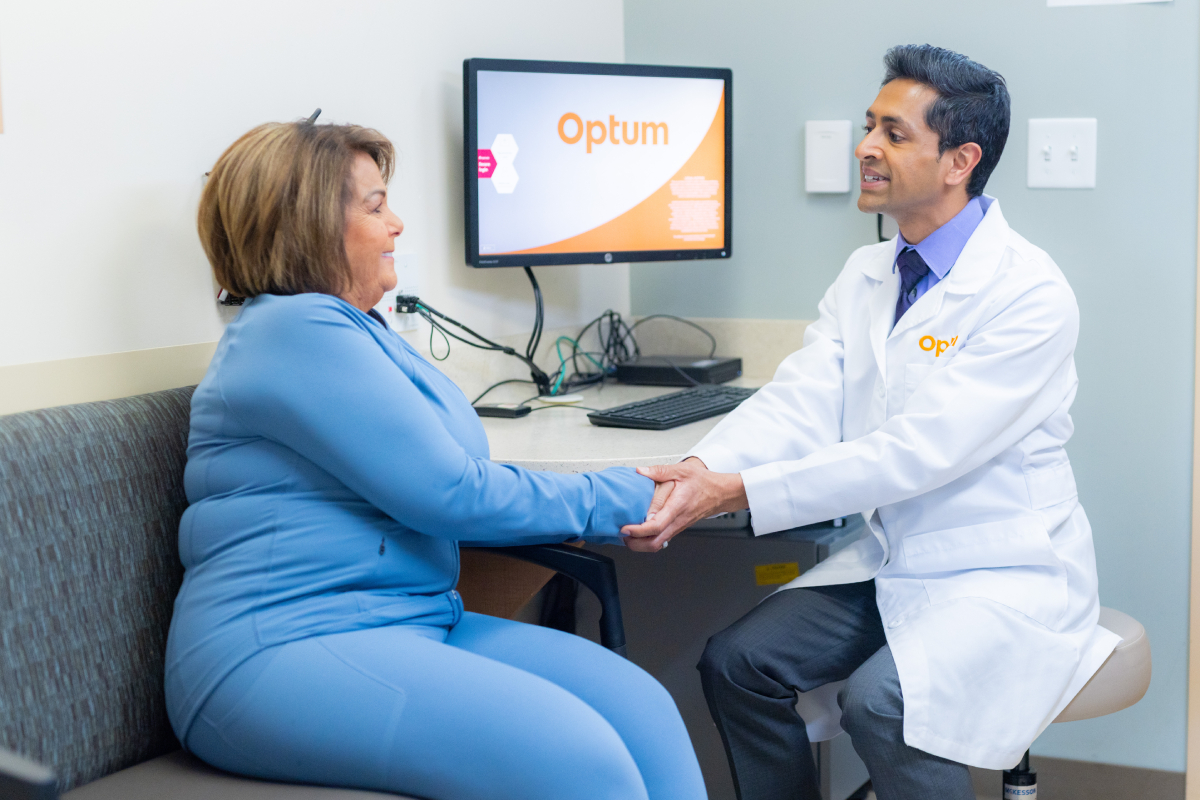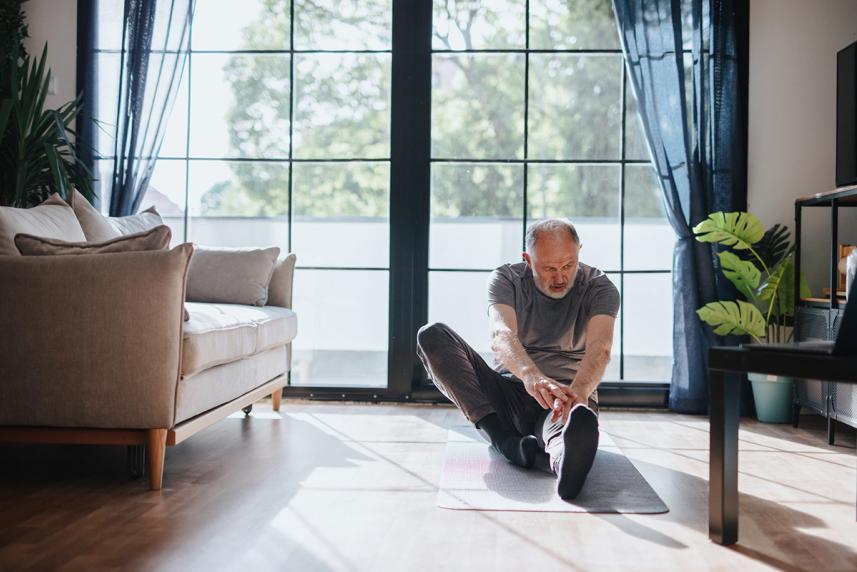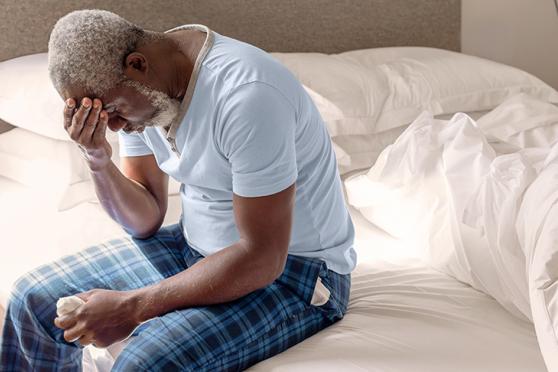
Signs you may be having a COPD flare-up

Sometimes the symptoms of this lung condition can suddenly get worse. Learn when to seek treatment, how to stop an attack and more.
Do you struggle with chronic obstructive pulmonary disease (COPD)? This lung problem makes it hard to breathe. COPD actually refers to a group of diseases that damage the lungs and block airflow.1 Nearly 16 million people in the United States have it, and adults ages 65 and older are at higher risk.1 Having a COPD flare-up can be especially tough to deal with.
A flare-up is when your COPD symptoms suddenly get worse.2 It can make you cough more, lose sleep or just feel exhausted. And plenty of things can trigger a flare-up.
“Patients have different things that set them off,” says Lawrence Shulman, DO. He is a pulmonologist (lung specialist) with Optum in Lake Success, New York. For some people, it’s a change of seasons or extreme hot or cold weather, he says. For others, it might be exposure to smoke or cleaning products with a strong odor.
What’s vital: understanding your triggers and knowing how to avoid them. Remember that if your COPD acts up, there are treatments that can help. Your doctor or specialist will be your partner in managing the disease, so that you can breathe easier.
Read on to learn more about common flare-up triggers, how to avoid them and when to get help from your care team.

What a COPD flare-up feels like
A COPD flare-up can feel different from one person to another. But there are some common signs to watch for. These include:2
- Changes to the color, thickness or amount of mucus you cough up
- More coughing than normal
- Feeling more tired than usual
- Increased shortness of breath
- Trouble sleeping
- Using your inhaler more often, especially your rescue inhaler (which can give you faster symptom relief)3
- Wheezing or noisy breathing
It’s good to be aware of these symptoms so you can report them to your doctor. Together, you can come up with a plan to help manage them.
Sometimes, though, a flare-up can turn into an emergency. If you have these severe symptoms, call 911.4, 5
- Chest pains
- Difficulty awakening from sleep
- Fingernails that turn blue or gray
- Medicine isn’t working and symptoms are getting worse
- Racing heartbeat
- Slurred speech, confusion or dizziness
- Trouble breathing or talking
How to treat a COPD flare-up
Prescription medications can help you manage flare-ups. Talk to your doctor if your symptoms last more than two days (or sooner if symptoms are getting worse).6 “It’s always better to err on the side of caution and call your doctor sooner than later,” Dr. Shulman says. The quicker you can treat the flare-up, the more likely it is that your symptoms will go away.
There are several flare-up treatment options your doctor may recommend. They include:6
- Quick-relief inhaler
- Steroid inhaler medicine, which is stronger than the inhaler you use every day, or steroids you take orally
- Antibiotics
Your doctor may also prescribe home oxygen therapy.7 This therapy involves breathing oxygen through a tube that’s placed directly into your nose.8 Or it connects to a mask that covers your nose and mouth. Some people with COPD use home oxygen therapy regularly. Others may only need it during a flare-up.
Looking for more great tips that can help you live your healthiest life? Sign up for our Optum newsletter today.
How to help prevent a COPD flare-up
One of the best ways to prevent future COPD flare-ups is to know your triggers.2 Triggers are the causes behind your flare-ups. And avoiding them is key to staying symptom-free.
Possible flare-up triggers can be outdoors, in public places or even in your home. They include:2
- Changes in the weather or season
- Pollen
- Strongly scented cleaning products
- Cigarette smoke
- Extreme temperatures
- Perfume
“All those things can make the lungs and the airway hyperreactive,” Dr. Shulman explains. This sets off a cycle of coughing, inflammation and mucus, he adds. That also means less air can travel through your body, which can cause shortness of breath.9
You may already know what your triggers are. If not, pay attention to when your COPD gets worse. And work with your doctor to find out the cause of your flare-ups.
Try to avoid these triggers whenever you can. For example, if you know pollen is a trigger of yours, check the pollen counts before you go outside. If they’re high, stay indoors if possible or wear a mask outdoors.
Or maybe there’s a home cleaning product you like, but the fumes bother you. Try opening the doors and windows when you clean, to keep your home ventilated.2 You could also use products with a milder scent.
Dr. Shulman also recommends staying up to date on vaccinations. Viruses such as COVID-19 and the flu can cause a COPD flare-up.2 Get vaccinated regularly. It’s one of the best ways to avoid COPD-related side effects. You may still get sick. But the bad effects are likely to be less serious if you’ve been vaccinated, Dr. Shulman notes.
Check with your Optum doctor about which vaccines and boosters you’re due for. That includes the pneumococcal vaccine. It can protect you from a bacterial infection that can cause, among other things, pneumonia.10
Finally, if you smoke cigarettes, stop. “For smokers, that’s the number one best way to avoid COPD flare-ups,” Dr. Shulman says. Talk to your Optum doctor to get help. They can provide the support you need to quit for good. Helping you feel your best and reach your health goals is the Optum way.
Sources
- Centers for Disease Control and Prevention. Basics about COPD. Last reviewed June 30, 2023. Accessed January 2, 2024.
- American Lung Association. Prevent COPD exacerbations or flare ups. Last updated May 23, 2023. Accessed January 2, 2024.
- National Library of Medicine: StatPearls. Albuterol. Last updated November 17, 2023. Accessed January 2, 2024.
- National Heart, Lung, and Blood Institute. COPD symptoms. Last updated October 25, 2023. Accessed January 2, 2024.
- American College of Emergency Physicians. Chronic obstructive pulmonary disease (COPD). Accessed January 2, 2024.
- National Library of Medicine: MedlinePlus. COPD flare-ups. Last reviewed December 6, 2021. Accessed January 2, 2024.
- Centers for Disease Control and Prevention. Chronic obstructive pulmonary disease (COPD). Last reviewed April 28, 2020. Accessed January 2, 2024.
- National Library of Medicine: MedlinePlus. Oxygen therapy. Last updated March 28, 2023. Accessed January 2, 2024.
- Mayo Clinic. Shortness of breath: causes. Last reviewed June 13, 2020. Accessed January 2, 2024.
- U.S. Department of Health and Human Services. Pneumococcal. Last reviewed May 6, 2022. Accessed January 29, 2024.
© 2024 Optum, Inc. All rights reserved. Do not reproduce, transmit or modify any information or content on this website in any form or by any means without the express written permission of Optum.
The information featured in this site is general in nature. The site provides health information designed to complement your personal health management. It does not provide medical advice or health services and is not meant to replace professional advice or imply coverage of specific clinical services or products. The inclusion of links to other websites does not imply any endorsement of the material on such websites.
Stock photo. Posed by model.



